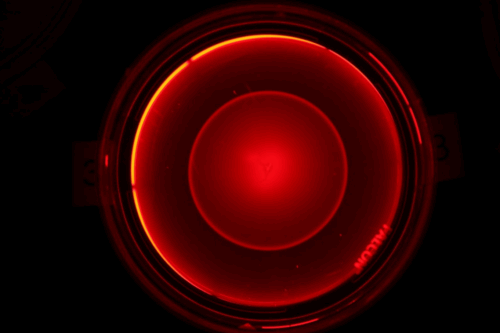Bacteria are capable of remarkable collective behaviors similar to those seen in fungi networks or bird flocks. One example is collective migration, where bacterial cells travel together by breaking down nutrients in their environment and chasing the nutrient gradient that they generate themselves. But in nature’s unpredictable environments, how do these microbes adapt their collective behavior without relying on slow genetic evolution?
A study led by Yale PhD candidate Lam Vo GSAS ’26 in the lab of Thierry Emonet, a professor of molecular, cellular, and developmental biology, sheds light on a novel mechanism of bacterial adaptation. In collaboration with an international team of scholars, Vo reported that Escherichia coli (E. coli), a common gut bacteria, can adapt to diverse environments by selectively enriching certain behavioral traits during migration without altering its genetic code.
To investigate this, Vo introduced E. coli populations in liquid or porous environments and observed their movement. Even though the cells share genetic similarities, the bacteria displayed behavioral diversity. Some cells swam smoothly in straight lines, while others turned more frequently. These distinct swimming styles led to spatial self-organization where fast swimmers naturally moved to the front, while slower ones lagged behind. But how fast the cells are depends on the environment that they are placed in.
“Imagine a race between ATV drivers and motorcyclists. If you are on a highway, the motorcyclists are faster. But if you are in rougher terrains like on mountain roads, the ATV drivers are going to perform better than the motorcyclists. The smooth swimmers are like the motorcyclists, and the cells that turn more often are like the ATV drivers,” Vo said.
The team discovered that, in a liquid environment, bacteria that swim straight are faster. They take the lead within the group, while those that turn more lag behind. Over time, the population left more and more of these bacteria behind, and the smooth swimmers became enriched. On the other hand, in porous environments where more obstacles are present, turning is advantageous to escape dead ends. In these environments, the bacteria that turned more led and became enriched instead. Notably, they showed that enrichment of specific swimming behaviors during migration is not due to changes in gene expression or arising mutations.
This discovery challenges traditional views of adaptation, which emphasize mutations or gene regulations. Mechanisms such as stochastic switching, or the random switching between traits, and regulation of gene expression are fast (typically requiring one generation) but are limited to the adaptation of a few traits and often require dedicated pathways to implement. Adaptation by genetic mutations avoids these limitations but is slow (requiring about ten generations). Non-genetic adaptation by migration provides a way for bacteria to reversibly adapt with a level of speed and flexibility that is difficult to achieve via classical mechanisms.
These findings could open up doors to exciting exploration, reshaping our understanding of topics such as evolution and therapeutic strategies for diseases. “Given the prevalence of collective migration in microbes, cancers, and embryonic development, non-genetic adaptation through collective migration may be a universal mechanism for populations to navigate diverse environments,” Emonet said. Next, the research team is interested in exploring non-genetic adaptations controlled by inheritance, the process by which traits are inherited during cell division. By revealing E. coli’s ingenious adaptations to environmental challenges, this research not only highlights how resilient these bacteria are, but also offers fresh perspectives on more complex biological systems.

